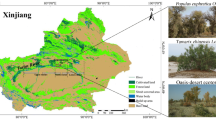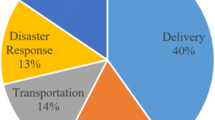Abstract
Computer vision has undergone significant transformation owing to deep learning in the last two decades. Deep convolutional networks have been successfully applied for various applications to learn different tasks related to vision, such as image classification, image segmentation, and object detection. Deep learning models can generate fine-tuned results by transferring knowledge to large generic datasets. This study aims to conduct an in-depth analysis of a big data tracking algorithm for aerial images of unmanned aerial vehicles (UAVs) to detect houses using neural networks to address the low accuracy and efficiency of manual detection in remote areas by mitigating the associated security risks. In the context of big data, a UAV-based preprocessing method is discussed for images using guided filtering. In order to reduce the impact of radiation distortion on the color and brightness of UAV-based aerial images of houses, a histogram matching method was applied. The guided filtering method is used to solve the problem of imaging details of houses that are not apparent after smoothing and denoising the aerial images. A house detection algorithm based on a deep neural network is then applied to the UAV images to detect the images of houses, and the time consumption of the deep learning operation is examined within the context of big data. Combining deep separation convolution and calculation optimization with YOLOv2 improves the house's image detection in real-time while preserving an accurate performance of UAV-based aerial images to detect houses by combining the YOLOv2 detection framework. The results of the experiments indicate that the proposed method can improve the efficiency and accuracy of house detection using aerial images and has certain practical applications.










Similar content being viewed by others
Data availability
Enquiries about data availability should be directed to the authors.
References
Ahmed F, Wei L, Niu Y, Zhao T, Zhang W, Zhang D, Dong W (2022) Toward fine-grained access control and privacy protection for video sharing in media convergence environment. Int J Intell Syst 37(5):3025–3049. https://doi.org/10.1002/int.22810
Ali M, Yin B, Kunar A, Sheikh AM et al (2020) Reduction of multiplications in convolutional neural networks. In: 2020 39th Chinese control conference (CCC). pp 7406–7411). IEEE.https://doi.org/10.23919/CCC50068.2020.9188843.
Aslam MS, Dai X, Hou J, Li Q, Ullah R, Ni Z, Liu Y (2020) Reliable control design for composite-driven scheme based on delay networked T-S fuzzy system. Int J Robust Nonlinear Control 30(4):1622–1642
Aslam MS, Tiwari P, Pandey HM, Band SS (2022) Observer-based control for a new stochastic maximum power point tracking for photovoltaic systems with networked control system. IEEE Trans Fuzzy Syst. https://doi.org/10.1109/TFUZZ.2022.3215797
Aslam MS, Tiwari P, Pandey HM, Band SS, El Sayed H (2023) A delayed Takagi–Sugeno fuzzy control approach with uncertain measurements using an extended sliding mode observer. Inf Sci 643:119204
Barbero-Garcia I, Kuschnerus M, Vos SE, Lindenbergh R (2023) Automatic detection of bulldozer-induced changes on a sandy beach from video using YOLO algorithm. Int J Appl Earth Obs Geoinf 117:103185. https://doi.org/10.1016/j.jag.2023.103185
Bilal H, Yin B, Kumar A, Ali M, Zhang J, Yao J (2023) Jerk-bounded trajectory planning for rotary flexible joint manipulator: an experimental approach. Soft Comput 27(7):4029–4039. https://doi.org/10.1007/s00500-023-07923-5
Bobkov AV, Aung Kh (2022) Real-time person identification by video image based on YOLOv2 and VGG 16 networks. Autom Remote Control 83(10):1567–1575. https://doi.org/10.1134/S00051179220100095
Chen G, Zhai XB, Li C (2023) Joint optimization of trajectory and user association via reinforcement learning for UAV-aided data collection in wireless networks. IEEE Trans Wirel Commun 22(5):3128–3143. https://doi.org/10.1109/TWC.2022.3216049
Chen F, Lu Y, Li Y, Xie X (2001) Real-time active detection of targets and path planning using UAVs. In: IEEE international conference on robotics and automation, ICRA 2021, Xi’an, China, May 30–June 5, 2021. IEEE, pp 391–397. https://doi.org/10.1109/ICRA48506.2021.9561365
Cheng B, Li Z, Xu B, Dang C, Deng J (2022) Target detection in remote sensing image based on object-and-scene context constrained CNN. IEEE Geosci Remote Sens Lett 19:1–5. https://doi.org/10.1109/LGRS.2021.3087597
Cui Z, Guan K, Oestges C, Briso-Rodríguez C, Ai B, Zhong Z (2022) Cluster-based characterization and modeling for UAV air-to-ground time-varying channels. IEEE Trans Veh Technol 71(7):6872–6883. https://doi.org/10.1109/TVT.2022.3168073
Deng L, Zhu H, Zhou Q, Li Y (2018) Adaptive top-hat filter based on quantum genetic algorithm for infrared small target detection. Multimed Tools Appl 77(9):10539–10551. https://doi.org/10.1007/s11042-017-4592-2
Galteri L, Seidenari L, Bertini M, Del Bimbo A (2017) Spatio-temporal closed-loop object detection. IEEE Trans Image Process 26(3):1253–1263. https://doi.org/10.1109/TIP.2017.2651367
He F, Mahmud MAP, Kouzani AZ, Anwar A, Jiang F, Ling SH (2022) An improved SLIC algorithm for segmentation of microscopic cell images. Biomed Signal Process Control 73:103464. https://doi.org/10.1016/j.bspc.2021.103464
Jaimes BRA, Ferreira JPK, Castro CL (2022) Unsupervised semantic segmentation of aerial images with application to UAV localization. IEEE Geosci Remote Sens Lett 19:1–5. https://doi.org/10.1109/LGRS.2021.3113878
Kellenberger B, Marcos D, Lobry S, Tuia D (2019) Half a percent of labels is enough: efficient animal detection in UAV imagery using deep CNNs and active learning. IEEE Trans Geosci Remote Sens 57(12):9524–9533. https://doi.org/10.1109/TGRS.2019.2927393
Kumar A, Shaikh AM, Li Y et al (2021) Pruning filters with L1-norm and capped L1-norm for CNN compression. Appl Intell 51:1152–1160. https://doi.org/10.1007/s10489-020-01894-y
Li L, Li W, Wang J, Chen X, Peng Q, Huang W (2023) UAV trajectory optimization for spectrum cartography: a PPO approach. IEEE Commun Lett 27(6):1575–1579. https://doi.org/10.1109/LCOMM.2023.3265214
Liu S, Qu J, Wu R (2022) HollowBox: an anchor-free UAV detection method. IET Image Proc 16(11):2922–2936. https://doi.org/10.1049/ipr2.12523
Luo X, Wu Y, Zhao L (2022a) YOLOD: a target detection method for UAV aerial imagery. Remote Sens 14(14):3240. https://doi.org/10.3390/rs14143240
Luo X, Wu Y, Wang F (2022b) Target detection method of UAV aerial imagery based on improved YOLOv5. Remote Sens 14(19):5063. https://doi.org/10.3390/rs14195063
Mao Y, Li X, Li Z, Li M, Chen S (2020) An anchor-free SAR ship detector with only 1.17 M parameters. In: Proceedings of the 2020 international conference on aviation safety and information technology, 2020, pp 182–186
Oppliger M, Gutknecht J, Gubler R, Ludwig M, Loeliger, T (2022) Sensor fusion of 3D time-of-flight and thermal infrared camera for presence detection of living beings. In: 2022 IEEE sensors, Dallas, TX, USA, October 30 - November 2, 2022, pp. 1–4, IEEE, doi: https://doi.org/10.1109/SENSORS52175.2022.9967309
Shi Y, Li X, Chen M (2023) SC-YOLO: a object detection model for small traffic signs. IEEE Access 11:11500–11510. https://doi.org/10.1109/ACCESS.2023.3241234
Tom AJ, George SN (2021) A three-way optimization technique for noise robust moving object detection using tensor low-rank approximation, l1/2, and TTV regularizations. IEEE Trans Cybern 51(2):1004–1014. https://doi.org/10.1109/TCYB.2019.2921827
Wang T, Wang X, Shi W, Zhao Z, He Z, Xia T (2020) Target localization and tracking based on improved Bayesian enhanced least-squares algorithm in wireless sensor networks. Comput Netw 167:1–10. https://doi.org/10.1016/j.comnet.2019.106968
Wang X, Li Y, Zhang N, Cong Y (2022a) An automatic target detection method based on multidirection dictionary learning for HFSWR. IEEE Geosci Remote Sens Lett 19:1–5. https://doi.org/10.1109/LGRS.2021.3062610
Wang G, Wei F, Jiang Y, Zhao M, Wang K, Qi H (2022b) A Multi-AUV maritime target search method for moving and invisible objects based on multi-agent deep reinforcement learning. Sensors 22(21):8562. https://doi.org/10.3390/s22218562
Wang HX, Cao J, Qiu C (2022c) Multi target detection method of aerial image based on improved YOLOv4. Electro Optics and Control 29(5):23–27
Wang L, Zhai Q, Yin B et al (2019) Second-order convolutional network for crowd counting. In: Proceedings of the SPIE 11198, fourth international workshop on pattern recognition, 111980T, 31 July 2019. https://doi.org/10.1117/12.2540362
Wu D, Yu L, Yu R, Zhou Q, Li J, Zhang X, Ren L, Luo Y (2023) Detection of the monitoring window for pine wilt disease using multi-temporal UAV-based multispectral imagery and machine learning algorithms. Remote Sens 15(2):444. https://doi.org/10.3390/rs15020444
Xiao H, Li Y, Xiu Y, Xia Q (2023) Development of outdoor swimmers detection system with small object detection method based on deep learning. Multimed Syst 29(1):323–332. https://doi.org/10.1007/s00530-022-00995-7
Xu L, Wang J, Zhang H, Gulliver TA (2017) Performance analysis of IAF relaying mobile D2D cooperative networks. J Frankl Inst 354(2):902–916. https://doi.org/10.1016/j.jfranklin.2016.10.023
Yan F, Zhang H, Zhou T, Fan Z, Liu J (2021) Research on multiscene vehicle dataset based on improved FCOS detection algorithms. Complexity 2021:9167116:1-9167116:10. https://doi.org/10.1155/2021/9167116
Yao W, Guo Y, Wu Y, Guo J (2017) Experimental validation of fuzzy PID control of flexible joint system in presence of uncertainties. In: 2017 36th Chinese control conference (CCC), pp. 4192–4197).https://doi.org/10.23919/ChiCC.2017.8028015
Yin B, Aslam MS et al (2023) A practical study of active disturbance rejection control for rotary flexible joint robot manipulator. Soft Comput 27:4987–5001. https://doi.org/10.1007/s00500-023-08026-x
Yin B, Khan J, Wang, L, Zhang J, Kumar A (2019) Real-time lane detection and tracking for advanced driver assistance systems. In: 2019 Chinese control conference (CCC). IEEE, pp 6772–6777. https://doi.org/10.23919/ChiCC.2019.8866334
Zhang Q, Zhang H, Lu X, Han X (2022) Anchor-free small object detection algorithm based on multi-scale feature fusion. In: 2022 5th international conference on pattern recognition and artificial intelligence (PRAI), Chengdu, China, 2022, pp 370–374. https://doi.org/10.1109/PRAI55851.2022.9904251
Zhou X, Wang D, Krähenbühl P (2019) Objects as points. arXiv:1904.07850
Funding
No funding was provided for the completion of this study.
Author information
Authors and Affiliations
Corresponding author
Ethics declarations
Conflict of interest
The authors have no relevant financial or non-financial interests to disclose. The authors declare that they have no conflict of interest.
Ethical approval
This article does not contain any study with human participants or animals performed by the authors.
Additional information
Publisher's Note
Springer Nature remains neutral with regard to jurisdictional claims in published maps and institutional affiliations.
Rights and permissions
Springer Nature or its licensor (e.g. a society or other partner) holds exclusive rights to this article under a publishing agreement with the author(s) or other rightsholder(s); author self-archiving of the accepted manuscript version of this article is solely governed by the terms of such publishing agreement and applicable law.
About this article
Cite this article
Li, J., Sun, W. Analysis of aerial images for identification of houses using big data, UAV photography and neural network. Soft Comput 27, 14397–14412 (2023). https://doi.org/10.1007/s00500-023-08967-3
Accepted:
Published:
Issue Date:
DOI: https://doi.org/10.1007/s00500-023-08967-3




